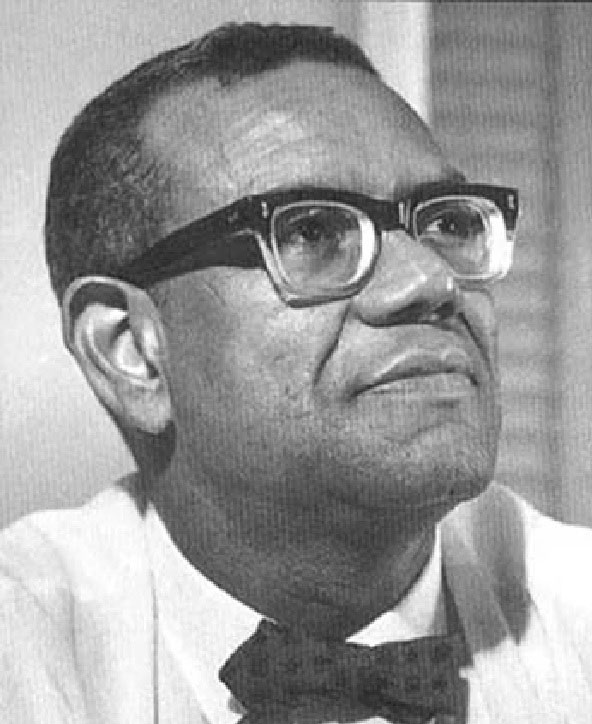Kykoveral.
Strange name for stones, a heap of stones
But a strong name to take imagination
And tie it to a peak in Time
Above lost plains drowned by the later names.
The English names which still come creeping in
On the slow gathering of the years.
And the strong name winds up the centuries
And builds again the fort to hold the sentry
Standing upon his picket in the night
Thinking of Holland and of home,
While the full everlasting winds stretch out,
Straight as a board and still without a flutter,
The Dutch pavilion overhead.
Then the winds howled and gathering strength they whistled
And hurled their music through the clump of trees
Which bowed and swung their torn and weeping leaves
Till the young sentry shivered at his post ——-
This country, with its clouds like new washed fleeces
Capering gaily on the blue map of the heavens,
And then so suddenly the heavens would fall
And bowels of rain let loose would swamp the earth.
Just three months more and then the ship comes in
To bear him home again to the low dykes
The trim, familiar chequerboard of Holland. […]
6
The races fade into a brown-stained people
And the Guiana Spirit arises, stretching
As a young giant begins to open his eyes.
And sees his country with its waiting promise
Fair and unraped, and lifts his head to the heavens.
Over Guiana, clouds.
11
[…] High symbols, that behind the brown of history
Dim objects brood and huge hands shape events
From here, a little actuated dust
And there, the blind collisions of the stars.
Over Guiana, clouds.
AJ Seymour
Arthur James Seymour, better known as AJ Seymour, was born in January. This selection, “Over Guiana, Clouds” is one of the important Guyanese poems of the twentieth century because of its place in the emergence of modern Guyanese pre-independence verse. It can help to illustrate his significant role in the shaping of Guyanese and West Indian literature.
The poem appeared in the collection of verse, Over Guiana, Clouds by Seymour, dated 1944 and was reprinted in A.J. Seymour Collected Poems 1937 – 1989, edited by Ian McDonald and Jacqueline de Weever (2000). At the time when it was written, Guyanese literature was at a significant period of its development. There was a lengthy colonial era which saw impactful change around 1890 with the work of Egbert Martin, known as Leo, whose published collections of poetry and short stories earned him the distinguished title of Founder of Modern Guyanese Literature. It marked the emergence of literature by Guyanese with a quality that can be identified as Guyanese writing.
Leo’s work, however, was not followed by poetry that solidified that advancement right away, since there were still volumes of work which were imitations of English nineteenth century verse. Yet several local poets were emerging to give rise to the existence of local literature in the colony. This led to serious advancements in the 1940s when several poets rose above or moved away from imitation and were beginning to produce work which gave literature its most marked qualities of identity since Leo’s time.
These included Walter MacA Lawrence who transformed imitative landscape into patriotic, nationalistic verse that was to have impact and influence for a couple of decades. He was followed by others, notable talents who contributed originality and confidence of speaking with their own voice, such as Wilson Harris and Edgar Mittelholzer, who went on to lead the way with outstanding fiction. Mittelholzer founded local social realism in 1941. Others of these talents also included Helen Taitt and CEJ Ramcharitar Lalla.
One of the overall qualities that accompanied this advancement was a growing nationalism in poetry, which helped to give it Guyanese identity as well as thematic strength and form. It was the building of national poetry which saw the nation through pre-independence literature and a further strengthening of nationalism in post-independence works. This development was, of course, driven by the remarkable originality and impact of Martin Carter in the 1950s, but especially in the 1960s.
Seymour was among the poets of the 1940s driving nationalism and identity and was a leading man of letters in West Indian literature. He was extremely prolific in not just writing poems, but in codification. He was much preoccupied with the shaping of West Indian poetry through many articles attempting to define it. Such was his impact that Edward Baugh devoted many pages to analyses of his inputs to the debates of what was West Indian poetry in the monograph West Indian Poetry 1900 -1970. Seymour was certainly committed to guiding paths for the development of Guyanese poetry.
The poem “Over Guiana, Clouds” Section 3 turns its attention to the Dutch fort called Kykoveral on an island in the Essequibo River. Its name translates into “looking over all” and indeed, it was built by the Dutch as protection for the colony of Essequibo. The fort was actually intended to look over the whole area covering the approach by sea and the mouth of the river. Enemy ships could be picked up as they approached. Interestingly, Seymour was the founding editor of the literary journal which took the name Kyk-Over-Al and served to look over emerging literature in Guyana and the Caribbean, publishing volumes and generations of new work. In truth, since its establishment by the British Guiana Union of Cultural Clubs in 1945 it gave service to literature, standing like a monadnock, looking over the region’s writing, just as the old Dutch fort, defying time and ruin, looks over the protectorate of Essequibo.
That function of the fort, now in ruins, is one of the many subjects treated in the poem. The poem is a historical one and owes its importance to the development of national literature to the way it illustrates what was happening to new poetry of the 1940s and what it was doing for a new turn in the colony’s poetry. It identifies itself as local verse in its several historical references and allusions to the country’s national possessions – its people, sights, landscape, forests and culture. It then turns its spotlight on the contemporary times and the plantations.
The clouds are symbolically looking over everything as they stand above the land, occasionally releasing rain. The clouds see all over a vast period of time and become witness to events in the country’s history and its transformation into an eventual nation.
Coming as it did in 1944, the poem predated the journal Kyk-Over-Al by one year, and with it, marks a watershed in the country’s poetic development. It illustrated the shape poetry was taking and helped to set the tone for the literature that developed after the upward turn of poetry signalled by its publication in 1944.









